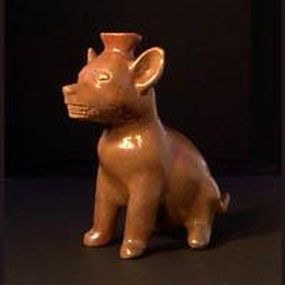|
Pre-Columbian Art
|
|
Dog of Colima
To view photo source, click on link 
This hollow dog was constructed out of red clay between 200 AD and 900 AD. It is short and fat, with teeth bared and a spout on it's head. The smoothness might indicate that it represents a dog of the hairless variety. It's ears have been made quite large.
|
|
|
|
 |
These dogs were created as burial items to serve as protection and for food in the afterlife, and are thought to represent the god , Xolotl (Aztec god of the underworld), who led the dead to the spirit world. They are found, still today, in Colima on farms and near burial sites. I chose this particular dog because while searching for Pre-Columbian artwork, I started reading about the myths of dogs in these times. Not only were they friends of the owners, the dogs were fattened up and eaten as well. The Colima culture worshipped these dogs, as they used them for healing such maladies as rheumatism. The terra cotta pieces were used in everyday life- hence, this particular piece was probably used as a vessel for water.
If I could go back in time, I'd like to know what tools were used to make this dog. Is he smiling or baring his teeth in an act of agression? Who was he buried with? How long did it take to make this piece? Colima is still famous for it's little red dogs. I'd like to visit there someday.
|